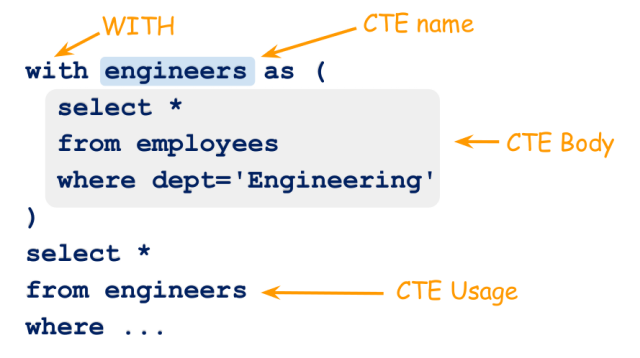MySQL Common Table Expressions (CTEs) are a powerful feature introduced in MySQL 8.0. CTEs are a type of MySQL 8.0 that provide a way to create temporary result sets that can be referenced within a SELECT, INSERT, UPDATE, or DELETE statement. The primary purpose of `CTEs` is to make complex queries more readable and manageable by breaking them down into simpler.

Purpose of CTEs
- Readability:
CTEscan make SQL queries more readable, especially for complex queries involving multiple subqueries or recursive operations. - Modularity: They allow you to define a temporary result set that can be reused within the same query, promoting code reuse and reducing redundancy.
- Recursive Queries: CTEs support recursive queries, which are useful for querying hierarchical data like organizational charts, bill of materials, or tree structures.
How to Use CTEs
CTEs are defined using the WITH clause and can be referenced within the main query. Here’s the basic syntax:
1 | WITH cte_name AS ( |
Basic CTE
Suppose you have a table employees and you want to find the average salary of employees in each department.
1 | WITH DepartmentSalaries AS ( |
In this example, DepartmentSalaries is a CTE that calculates the average salary for each department. The main query then selects from this CTE.
CTEs feature also supports multiple temporary result sets in the same query, see below example:
1 | WITH |
Above sqls defines two CTEs cte1 and cte2 and then joins them using a WHERE clause.
Recursive CTE
A CTE can refer to itself to define a recursive CTE. Common applications of recursive CTEs include series generation and traversal of hierarchical or tree-structured data.
Suppose you have a table employees with a self-referencing column manager_id to represent a hierarchy. You want to find all subordinates of a given manager.
1 | WITH RECURSIVE Subordinates AS ( |
In this example, Subordinates is a recursive CTE that starts with employees directly reporting to manager ID 1 and then recursively includes all their subordinates.
Key Points
- Non-Recursive CTEs: These are straightforward and do not involve recursion. They are simply a way to define a temporary result set for use within the query.
- Recursive CTEs: These involve recursion and are useful for hierarchical or tree-structured data. They must include a
UNION ALLclause to combine the initial result set with the recursive result set. - Scope: CTEs are scoped to the query they are defined in and cannot be referenced outside of that query.
CTEs are a powerful tool in MySQL that can significantly improve the readability and maintainability of complex SQL queries.
Reference Links:
For other scenarios, like use WITH clause in UPDATE or DELETE statements, please refer to the following links:
- WITH (Common Table Expressions): https://dev.mysql.com/doc/refman/8.4/en/with.html


